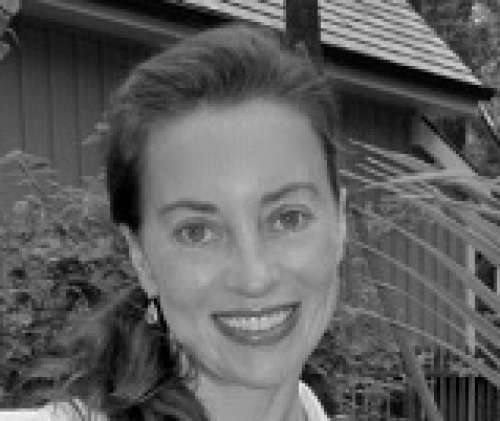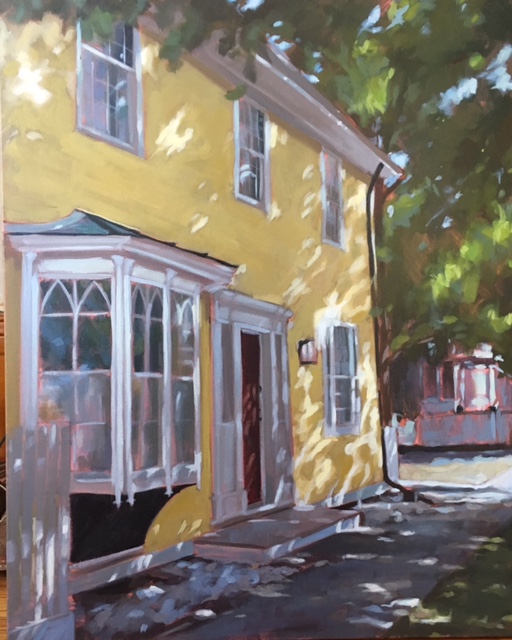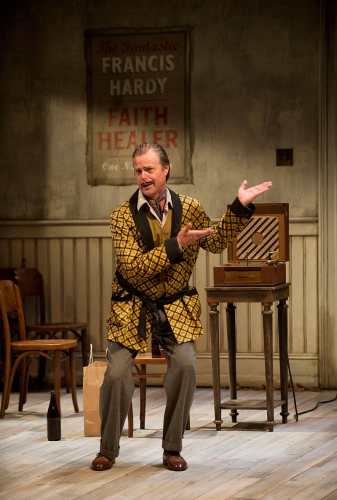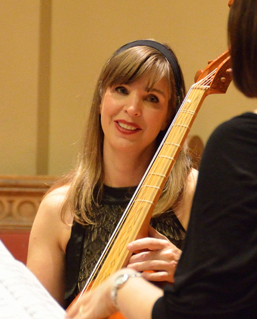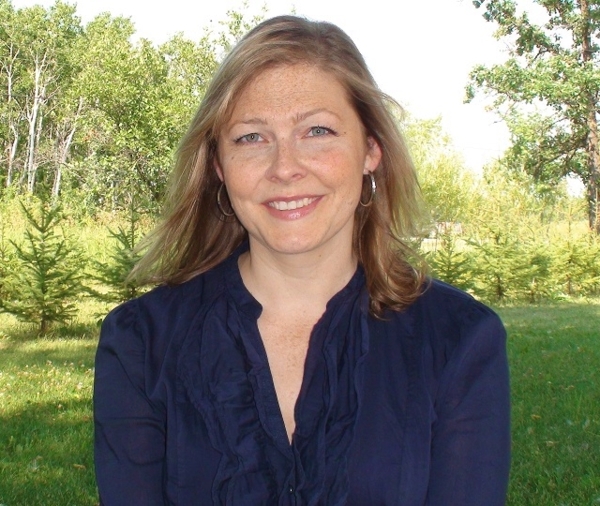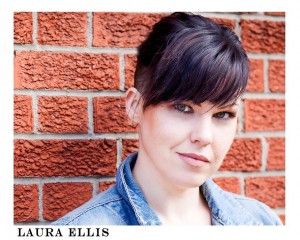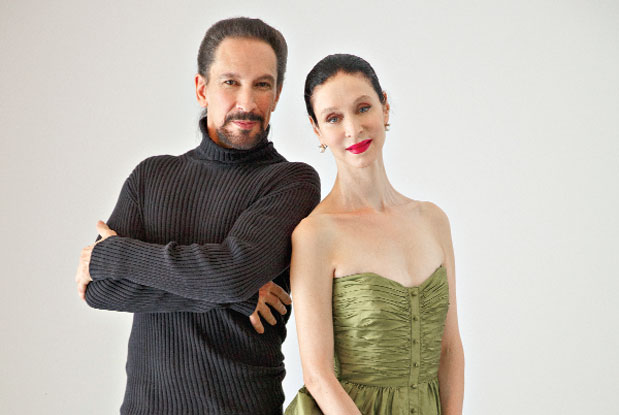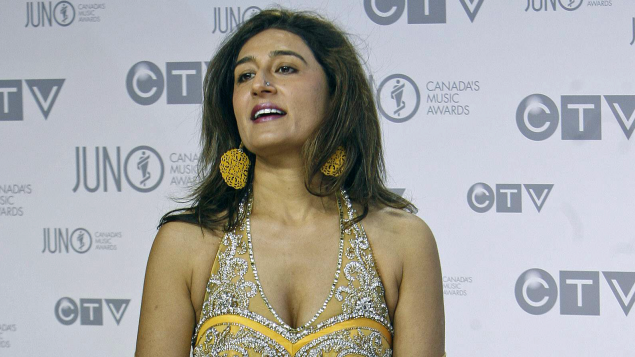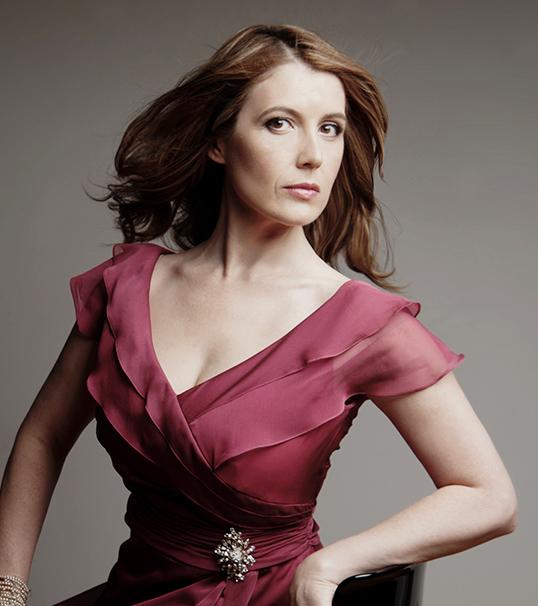 JAMES STRECKER: If you were asked for 50 words for an encyclopedia to summarize what you do, or have done, in the arts, what would you say?
JAMES STRECKER: If you were asked for 50 words for an encyclopedia to summarize what you do, or have done, in the arts, what would you say?
KRISZTINA SZABÓ: I stole this from my own website bio, but I think it answers the question appropriately! “Krisztina Szabó, Hungarian-Canadian mezzo-soprano, exemplifies today’s modern singer. She is vocally versatile, possesses excellent stage prowess and paints vivid character portraits on both the opera and concert stages, and is well-known within Canada as a passionate interpreter of new music.”
JS: What important beliefs do you express in or through your work?
KS: I’m not sure what beliefs I necessarily express through my singing. I try to infuse each performance with as much honesty of emotion as I can while being faithful to the text of the piece and the intentions of the composer.
JS: Name two people, living or dead, whom you admire a great deal and tell us why for each one.
KS: I had the honour of meeting Maureen Forrester as a young child in the Toronto Children’s Chorus. She was a true Canadian icon – an incredible voice with an international career, but down-to-earth, warm, easy, with an amazing sense of humour. I admired her so much, and the more I learn about her, the more my admiration grows. She had an extraordinary career, a large family and still managed to be kind and generous to everyone she encountered. I think that says so much. And I greatly admire Barbara Hannigan, Canadian soprano and conductor. To witness her evolution as an artist has been truly remarkable. She is fiercely intelligent, unbelievably open and daring as an artist, ambitious, talented and has remained thoughtful and generous as a person and colleague.
JS: How have you changed since you began to do creative work?
KS: I honestly can’t remember a time when music was not a part of my life, so to say when it “began” is a challenge… being a musician, being a singer, simply has always been who I am. I have always thought, and I now tell my students, what a gift it is to be a singer because it’s a lifelong journey, always evolving and changing, and it provides a unique opportunity for self-exploration. I feel like my evolution as a singer and as a person have gone hand in hand.
JS: What are your biggest challenges as a creative person?
KS: There are many challenges to living life as a self-employed classical singer. The three things that leap to mind are health, financial stability and loneliness. As a singer, if I am not healthy, I cannot sing, and therefore will not be paid. There are no “sick days” for singers – you can either sing or you can’t. Consequently, I have figured out how to sing through illness and, (knock on wood), in 20 years of singing professionally I have yet to have cancelled anything due to illness. But, that comes at a cost – singing through colds, singing after having spent the night in emergency with food poisoning, singing with a slight fever… all this is taxing physically as well as mentally. And the paranoia about staying healthy can be all-consuming – ask any singer what their regimen is for staying healthy, as well as for dealing with illness, you will find that they have quite a comprehensive answer for you! As for finances, when every year looks entirely different from one to the next, depending on what contracts have been booked, it is extremely challenging to find any sense of stability, and sense of peace about what the future holds.
And as for the loneliness… as I write this, I sit in a hotel room away from my husband and daughter, contemplating the next few weeks I will spend on the road, and the contracts in 2018 that will take me away from my family for at least 4 months of the year. I am fortunate to have a husband who works in the arts, and understands and appreciates what I do, but it is challenging to have a family life when there is so much time spent apart. And though the other singers and musicians that I meet on gigs are often lovely people, a lot of my time is spent doing exactly what I am doing right now… sitting alone in my hotel room. I just read a quote today from renowned mezzo-soprano, Felicity Palmer, that sums up the challenges of being a singer: “You need to look at whether becoming a singer is a life or death issue because if it isn’t, it’s a tough kind of life.”
JS: Please describe at least one major turning point in your life.
KS: The most significant turning point I have had in my life I would say happened while I was in university. I began my studies as the University of Western Ontario (now Western University) as a piano major enrolled in the Music Education programme. I had plans on being a high school music teacher. My strict Hungarian father had reservations about this plan – he had hoped I would be a doctor or a lawyer, so doing this degree at all was a challenge to begin with. I met my voice teacher, Dr. Darryl Edwards, while at Western and began taking singing lessons with him on Saturdays, outside of my degree programme. I had always sung, but had never taken a private singing lesson until I met Dr. Edwards.
In my second year of university, I began having what I would say was an allergic reaction to playing the piano – my hands started crack and bleed when I played. I had to defer my jury that year. It was sometime during that time that I realized that I would much rather be a voice major, so in third year, I changed majors from piano to voice. But it was in 4th year university, that I began to really question whether or not I wanted to be a music teacher at all. Performance opportunities at the university presented themselves, and something in me clicked. It was like I knew who I was when I was singing on stage – it somehow felt like I could finally express the truest version of myself… and it was an addictive feeling. I went on to defy the wishes of my family, and defy the expectations of pretty much everybody else that an Education major would be able to make a career as a performer, and I abandoned the plans to go to Teachers’ College. Instead, I threw myself off the metaphoric cliff into the unknown abyss by saying to myself and the world: “I want to be singer”.
JS: What are the hardest things for an outsider to understand about what you do?
KS: I don’t really think “outsiders” understand what a complicated set of challenges I have to face as a singer trying to make a life and a living as an artist. As I mentioned, there are no sick days, there is very little (except a little bit through unions) in the way of a pension plan. My life looks entirely different from one day to the next – this is not necessarily a bad thing, but does not make for a sense of calm and stability. Performing makes for adrenaline highs and lows that are very taxing on the body. Being a singer and having a family is extremely challenging – having a child at all was terrifying because I thought that perhaps it meant that I would no longer be able to have a career, that I would thought as “not committed enough” because I dared to have a life outside the career.
I have to learn a crazy amount of music. I have to be impeccably prepared for each contract in hopes that the company will not only like me, but that they will like me enough to hire me again. I have to get up in front of people and open up my soul sometimes when I’m not well, or facing personal challenges – for example, when my father passed away, I was in the middle of an opera contract and had to sing that final show. I face constant criticism, I have to hustle to get work, I have to make sure to stay relevant as I age in an industry that increasingly values youth and “the next superstar”. It must seem like a very strange and bemusing life to an outsider!
JS: How and why did you begin to do creative work in the first place?
KS: Like I said, being a singer is just who I am. As a child, I sang all the time around the house, and teachers at school noted my singing ability and often put me forward for solos at school events. In Grade 3, my teacher sent me to audition for the Toronto Children’s Chorus, which really began my more concentrated involvement with singing. And around the same time, I had begun piano lessons. Once I was more formally involved with music, it became my life.
JS: What haven’t you attempted as yet that you would like to do and please tell us why?
KS: I would love to sing the role of Octavian in Strauss’ opera Der Rosenkavalier… it is a dream role of mine, and it would be lovely to have that dream realized one day!
JS: What are your most meaningful achievements?
KS: Personally, my most meaningful achievement is of course my daughter. Professionally, being able to say that I have been singing professionally for 20 years – and that I’m not done yet! – is my most meaningful achievement.
JS: What advice would you give a young person who would like to do what you do?
KS: I have been asked by young singers for advice on this matter, and I respond by first telling them my story. I tell them of the challenges I have faced, and the joys as well. I tell them what people told me “If you want to do anything else, do it. But if singing is absolutely the only thing you want to do, then go for it.” I tell them that they will get advice/criticism/feedback from pretty much everybody and his brother, and that it is really important to find your own voice, listen to your own instincts and know what is true, what is right for you.
JS: Of what value are critics?
KS: Nothing stings more than bad review or a review that doesn’t even mention (shock! horror!) your performance. Some of my colleagues do not read reviews because they say: “If you believe the good ones, then you have to believe the bad ones.” I am masochistic and read everything – also, one has to put the good reviews on one’s website! I really have to remind myself that a critic’s review is simply one person’s opinion – sometimes I read reviews of performances I have seen myself and totally disagree with what has been written. But reading my reviews has definitely toughened me up, and made me come to peace with how I feel about my own performance, who I am as a singer and what I have to offer.
JS: What do you ask of your audience?
KS: All I ask of my audience is to be open to the experience of what they are about hear and see. And maybe pre-open those candy wrappers and turn off their cell phones! Oh, and also, please don’t look at me with a look that is totally disgruntled and/or bored… I can see you and it’s very distracting!
JS: What specifically would you change about what goes on in the world and the arts?
KS: Well, there is so much I would change in the world – there is so much going on right now, frankly, it’s overwhelming. But with the recent happenings in Hollywood (i.e. the Weinstein case), it has made me think about women’s place in society and in my career specifically. Its time that women were truly valued as equals to men, that women were paid the same as men, that harassment was not something I have to teach my daughter to expect to happen to her.
JS: If you could relive one experience from your creative life, what would it be and why would you do so?
KS: If I’m being greedy, there are many experiences I would love to relive. But the one that pops to mind from recent memory is singing The Woman in Erwartung at the Canadian Opera Company. It felt like the culmination of years of hard work, singing a role that was an absolute gift in an amazing production I had long admired, with a company that has nurtured and supported me from the beginning, doing it in my own home-town. It was a sweet moment that I would happily relive.
JS: Tell us what it feels like to be a figure who is presented somehow in the media. What effect does this presence have on you?
KS: I’m not sure how “presented” I am in the media. I do my work, its get reviewed, and when companies are looking to promote shows I am in, I will obviously do any and all the publicity. I don’t really think about that too much. Its odd when someone recognizes me – I like to think of myself as a working singer and I’m always surprised if someone knows me from my work.
JS: Name two places you would like to visit, one you haven’t been to and one to experience again and briefly tell us why
KS: I am still dreaming of a Caribbean vacation at some point in my life that has yet to happen – sun, sand, beach and a little time off would be lovely! Iceland was on my bucket list, but my family and I went there last summer, so I can cross that off. Hmmm… I would like to go to Japan. It seems like an incredible place, and I’ve always been fascinated by Japanese culture.
JS: Please tell us about one or more projects that you have been working on, are preparing, or have recently completed. Why do they matter to you and why should they matter to us?
KS: Last week, I was in Montreal with Ensemble Contemporain de Montréal singing Ana Sokolovic’s Pesma. As I write this, I am in rehearsals with Arion Baroque Orchestra for a concert for the Montreal Bach Festival. After this, it’s Messiah season – with Vancouver Early Music, Newfoundland Symphony Orchestra and Toronto Symphony Orchestra. And in the new year, the first half of the year is dedicated to British composer, George Benjamin – first singing with Opera Philadelphia in his opera, Written on Skin, then débuting his new opera, Lessons in Love and Violence, at the Royal Opera House in London, England. I must admit that I am excited about all of it – I love the variety of music that I get to sing – from Bach to contemporary – and I love the people I get work with… its all quality music-making with talented musicians, from small ensembles to large orchestras.
JS: Let’s talk about the state of the arts in today’s society, including the forms in which you work. What specifically gives you hope and what specifically do you find depressing?
KS: A few years ago, it seemed like there were a lot of opera companies and orchestras going under which felt very disheartening. But I feel like there is a new movement in music – of doing smaller projects in unique venues…companies like Tapestry Opera and Against the Grain Theatre (Toronto) who are revolutionizing the music scene by, as AtG writes, “presenting classical music in innovative ways and in unusual venues.” This movement excites me – the hunger for classical music is not gone, it is perhaps transforming. I for one am excited to explore this transformation, as an artist as well as audience member. And this does not make large operas or orchestral experiences less relevant – I think these more intimate experiences will serve to spark and feed new audiences, build a new following and get them excited about classical music so that going to an opera or orchestra concert will be a natural progression of that excitement.
JS: Finally, what do you yourself find to be the most intriguing and/or surprising thing about you?
KS: I don’t that I’m particularly intriguing! Maybe the most surprising thing about me is that I consider myself an introvert. Performing in front of a large audience is completely natural. Talking to people is not so natural!

